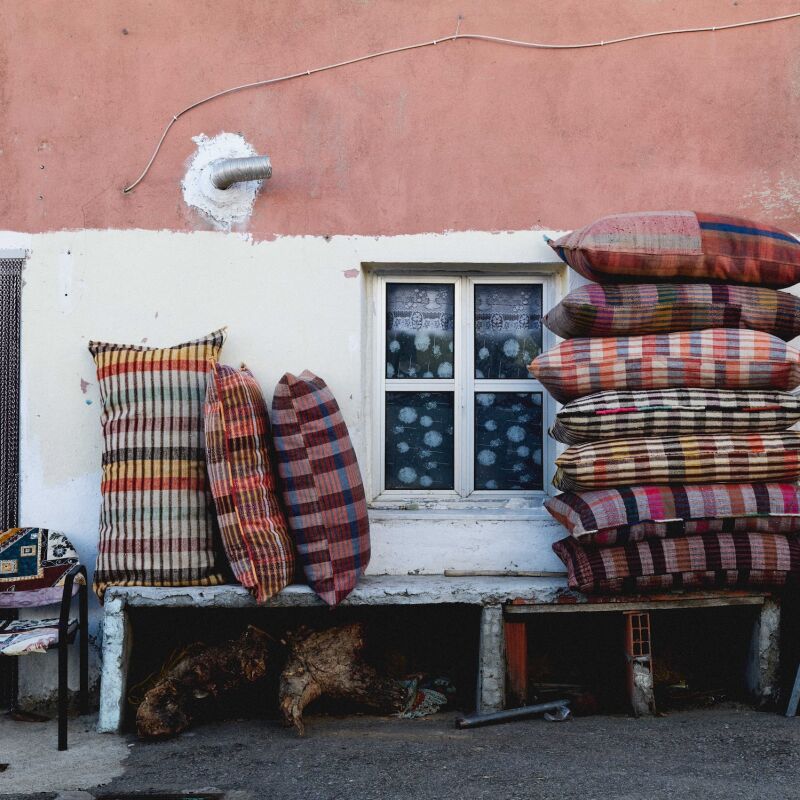In the 1770s, when Thomas Chippendale was putting the finishing touch on the furnishings at Harewood House, the Robert Adam-designed estate in Yorkshire represented the height of Georgian chic. The property is again in the design vanguard: now run as a museum and educational charitable trust, its gilded rooms and Capability Brown gardens are currently the stage for a probing exhibit.
Hugo MacDonald, curator of Harewood’s current biennial, set out to answer the question: “How can craft be a radical act, helping us to address social and environmental issues in contemporary life?” His show, on view through August 29, presents answers from 16 designers, artists, and makers. “Each participant tackles an issue of modern life: human connection, social justice and equality, climate change and conservation, material potential and natural resources, land use and landfill,” says MacDonald. The work is presented in the company of Harewood’s well-preserved finery: Chippendale, meet your contemporary counterparts—and a new case for the importance of handwork as a way of life.

In addition to the show, Harewood is staging related events, such as a Why Craft Matters symposium June 30-July 1, and Make It lessons July 2-3 in blacksmithing, woodcarving, and how to build a three-legged stool.

Collins asks viewers to consider “what Harewood House represents in a way that runs deeper than the surface gilding and luxurious textiles. Acknowledge how the wealth of this estate was amassed from the West Indian slave trade, and respect the significance of the Caribbean community to our British story.” Collins talks about the Harewood project in a short film produced for the exhibit.

Hear Laposse talk about his work in the Radical Acts podcast.

“Reuse is not a trend,” they write, “it is an innately human principle that we have only recently neglected.” Go to the Radical Acts podcast to hear the couple discuss their practice, and check out more of their work on our site: 8 Retrouvius Bathroom Designs Featuring Reclaimed Components and A Rustic Townhouse Remodel By London’s Masters of Salvage.

“Mending,” Pym says, “is not just about fixing something, it is also an act of care. The item has a new life, perhaps even a better one.” Hear more from Pym in the Radical Acts’ podcast.


Their Well-being Collection, on view in the yellow drawing room, is the result of asking weavers and other producers what would have the greatest impact on their welfare. “They answered: local materials, local supply chains, no dye, and no bleach.” Each piece, from hammock to throw blanket, celebrates “the individual character that is a powerful consequence of craft.”

The author of a manifesto advocating “nature-first land and resource use,” Cox notes that “cutting trees can be more useful than just planting them. When we fell trees and let light in to the woodland floor, other plants, insects, mammals, and birds can thrive.” Cox explains more in a Radical Acts video short.

More design inspiration from museums:
- Responsible Reuse: Furniture Built from Dinesen Offcuts for a Museum Café
- In the Dwelling House: 16 Design Ideas to Steal from the Shakers
- 14 Lessons in Minimalism from the Glass House




Have a Question or Comment About This Post?
Join the conversation